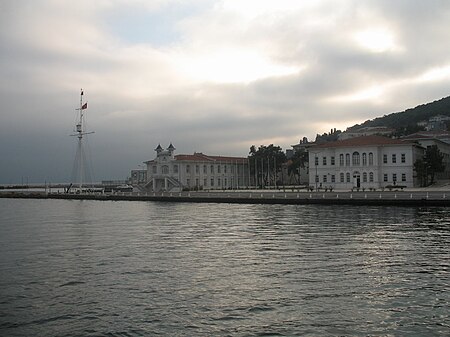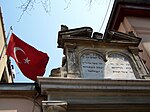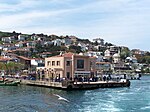Heybeliada

Heybeliada, or Heybeli Ada, is the second largest of the Princes' Islands in the Sea of Marmara, near Istanbul, Turkey. It is officially a neighbourhood in the municipality and district of Adalar, Istanbul Province, Turkey. Its population is 4,424 (2022). Its name, meaning 'with a saddlebag' in Turkish, in supposed reference to the valley between two hills. The island was known as Halki, Halkitis (Greek: Χαλκίτις) and Demonesos (Δημόνησος) in antiquity, the first two toponyms deriving from the Greek word halkos (Greek: χαλκός), meaning copper. The island was famous for its copper and copper ores in antiquity.In winter the island's population is only about 4,400, but in summer, the owners of summer houses return and the population swells to approximately 30,000.Launched in 2008, TCG Heybeliada, used by the Turkish Navy is named after the island.Until 2020, the only vehicles permitted on the island were ambulances, fire tenders, police cars etc; the only official form of transport was by horse-drawn phaeton. However, as tourism steadily increased animal-rights activists became increasingly concerned about the horses' welfare and so the phaetons were withdrawn in favour of electric vehicles.The island is served by Şehir Hatları ferries from Kabataş and Eminönü on the European side of İstanbul and Kadıköy and Bostanci on the Asian side.
Excerpt from the Wikipedia article Heybeliada (License: CC BY-SA 3.0, Authors, Images).Heybeliada
Geographical coordinates (GPS) Address Nearby Places Show on map
Geographical coordinates (GPS)
| Latitude | Longitude |
|---|---|
| N 40.877777777778 ° | E 29.091666666667 ° |
Address
34973 , Heybeliada (Heybeliada Mahallesi)
Turkey
Open on Google Maps





